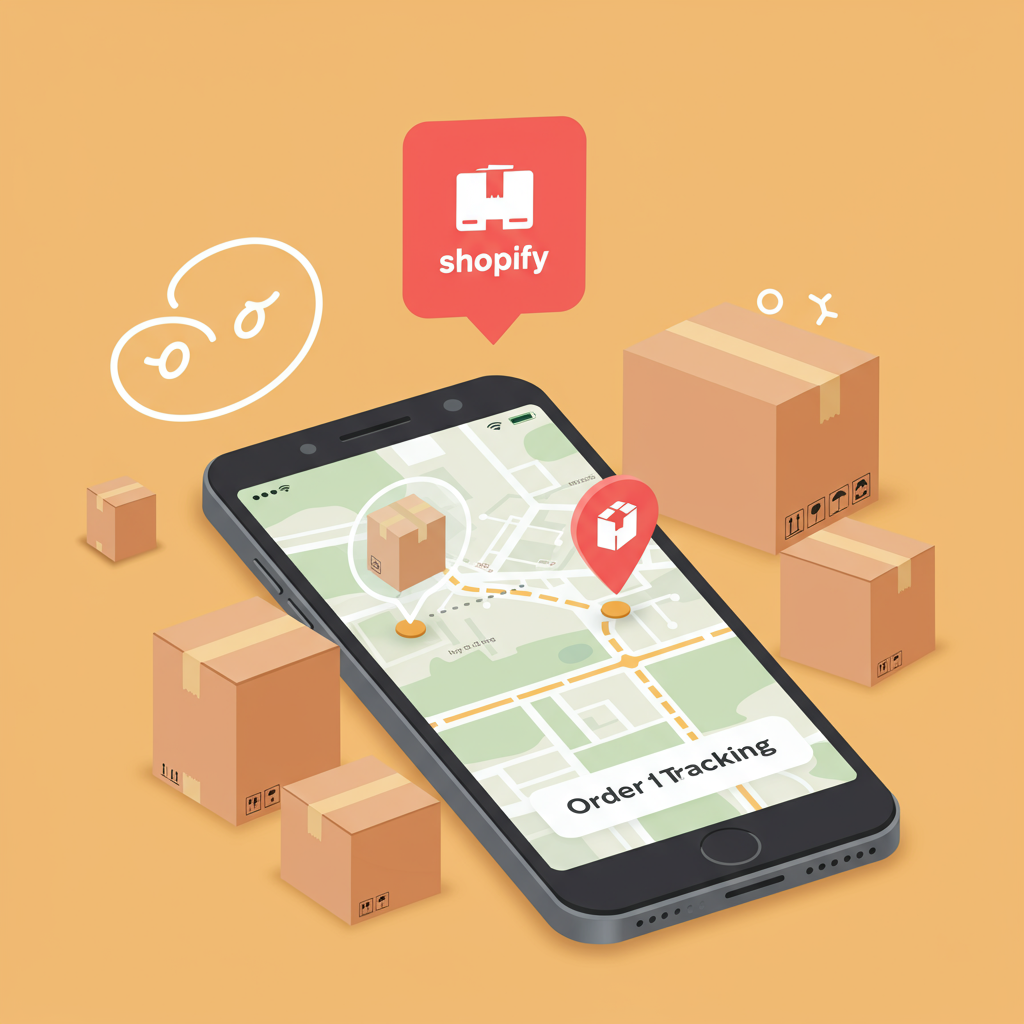Elevate Customer Experience and Streamline Operations with Advanced Tracking Solutions.
As a Shopify merchant, I know firsthand the excitement of a new order. But that excitement quickly shifts to the crucial phase of fulfillment and, perhaps most importantly, keeping your customer informed.
In today’s e-commerce landscape, customers expect transparency. They want to know where their package is, when it will arrive, and if there are any delays. This isn’t just a nice-to-have; it’s a fundamental expectation.
That’s why I want to talk to you about order tracking integration for your Shopify store. It’s a powerful tool that can significantly enhance your customer’s post-purchase experience and, in turn, benefit your business.
Think about it from your customer’s perspective. Once they’ve clicked “buy,” the waiting game begins. Providing them with real-time updates alleviates anxiety and builds trust.
A dedicated, easily accessible tracking page means fewer “Where’s my order?” emails or calls to your customer service team. This frees up your resources to handle more complex inquiries.
For your customers, it means peace of mind. They can plan for delivery, make arrangements if they’re not home, and feel more connected to their purchase journey.
This enhanced transparency directly translates into higher customer satisfaction. Satisfied customers are more likely to become repeat buyers and recommend your store to others.
From a merchant’s standpoint, the benefits are equally compelling. Beyond reducing customer service load, robust tracking provides valuable insights.
You can monitor delivery performance, identify common shipping issues, and even proactively address potential problems before they escalate into customer complaints.
Shopify does offer some basic order tracking capabilities natively. When you fulfill an order and add a tracking number, customers receive an email with a link to the carrier’s website.
While functional, this native solution often lacks the branding, customization, and comprehensive features that many modern e-commerce businesses require.
The customer is redirected away from your store, losing that branded experience. Notifications are generic, and there’s limited control over the tracking page’s appearance.
This is where third-party order tracking integration solutions come into play. These apps and services are designed to fill the gaps left by Shopify’s basic offering.
They provide a more sophisticated, branded, and automated tracking experience, keeping your customers engaged with your brand even after they’ve made a purchase.
When I look for a tracking solution, I consider several key features. First, multi-carrier support is essential. If you ship with different carriers, your tracking solution needs to handle them all seamlessly.
Second, a branded tracking page is non-negotiable. This page should live on your domain, reflect your store’s aesthetic, and reinforce your brand identity.
Third, customizable notification triggers are incredibly useful. You want to be able to send automated updates for events like “in transit,” “out for delivery,” “delivered,” or “delivery exception.”
Fourth, real-time updates are crucial. Customers expect accurate, up-to-the-minute information, not data that’s hours or days old.
Fifth, analytics and reporting can provide valuable insights into your shipping performance, helping you identify bottlenecks or areas for improvement.
Sixth, integration with your customer service tools can streamline support. Agents can quickly access tracking information directly from their helpdesk.
Finally, consider the ease of setup and ongoing management. A complex system will negate the time-saving benefits it’s supposed to provide.
Integrating one of these solutions into your Shopify store is typically straightforward. Most popular tracking apps are available directly in the Shopify App Store.
Once you’ve chosen an app, installation is usually a one-click process. From there, you’ll configure settings like your preferred carriers, notification templates, and the appearance of your tracking page.
Many apps also allow you to automatically import tracking numbers from your Shopify orders, or even directly from your shipping software, further automating the process.
After setup, it’s vital to test the integration thoroughly. Place a test order, track it yourself, and ensure all notifications are firing correctly and the tracking page looks as expected.
My advice for best practices? Always communicate clearly with your customers about how they can track their orders. Include the tracking link prominently in your order confirmation and shipping emails.
Set realistic expectations for delivery times. While tracking provides transparency, it doesn’t speed up shipping. Be upfront about potential delays, especially during peak seasons.
Leverage the data. Use the analytics provided by your tracking solution to refine your shipping strategies, negotiate better rates with carriers, or even adjust your product offerings based on delivery performance.
Proactive communication is key. If a delivery exception occurs, consider sending an automated notification to the customer before they even realize there’s an issue. This turns a potential negative into a positive customer service interaction.
What do you think about this approach to order tracking? Have you implemented a solution in your store, and what has your experience been like?
In conclusion, investing in a robust order tracking integration for your Shopify store isn’t just about providing a tracking number. It’s about building trust, enhancing customer satisfaction, and streamlining your own operations.
It transforms a potentially anxious waiting period into a transparent and engaging post-purchase experience, ultimately contributing to the long-term success of your e-commerce business.






